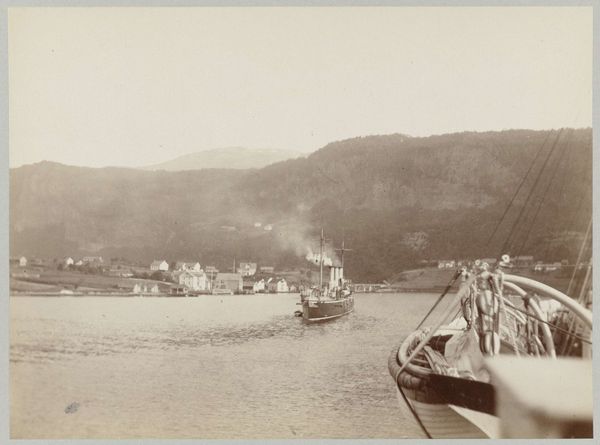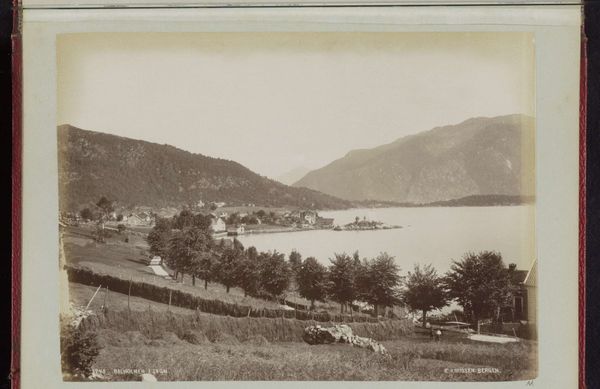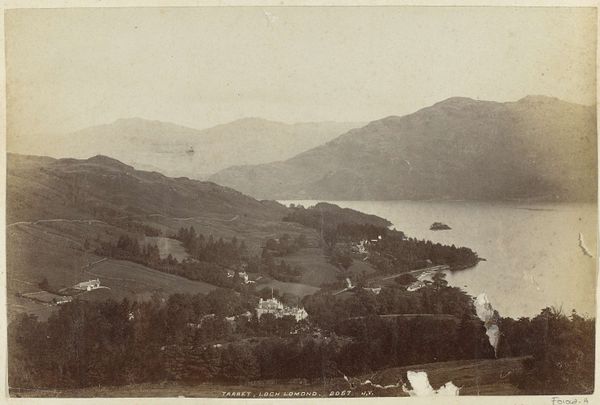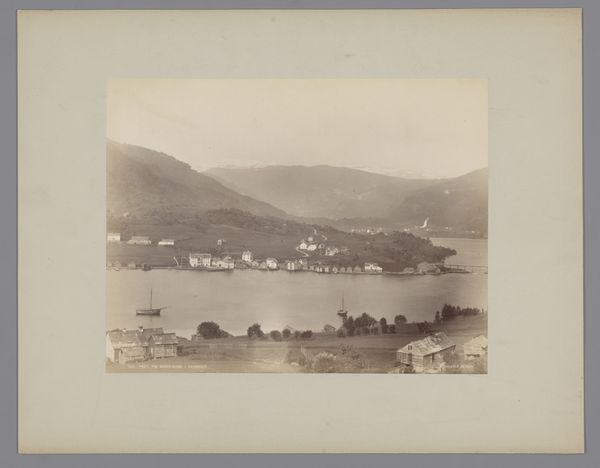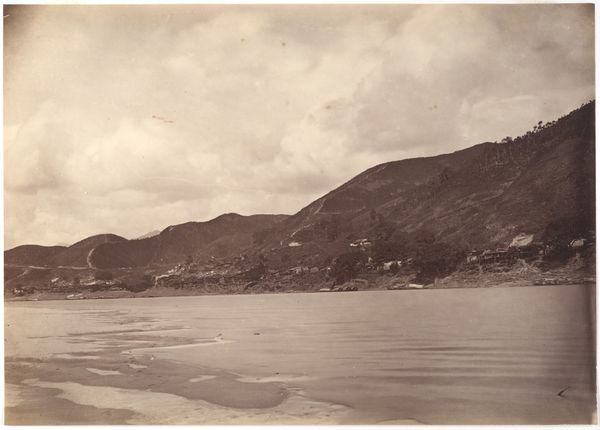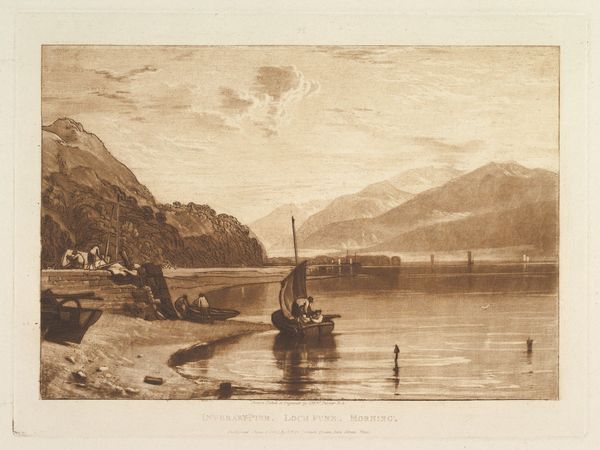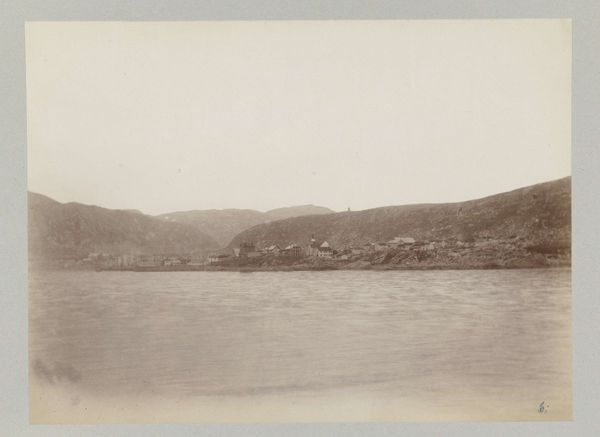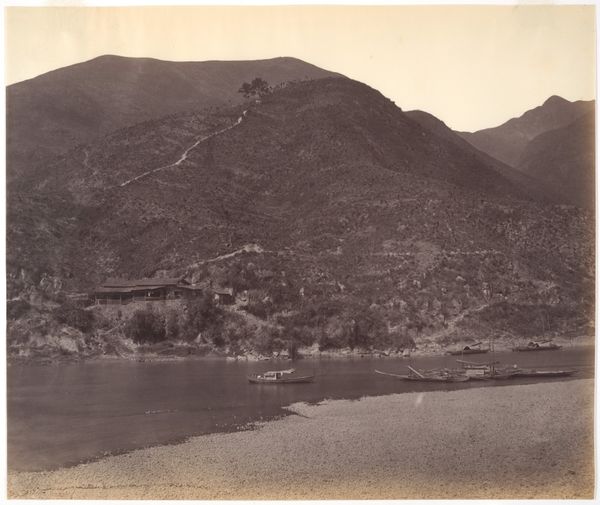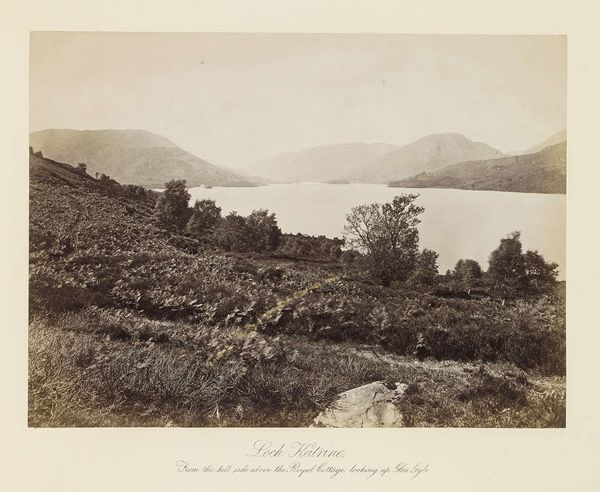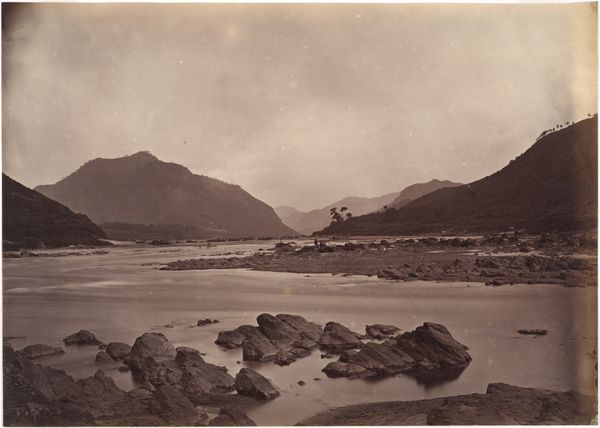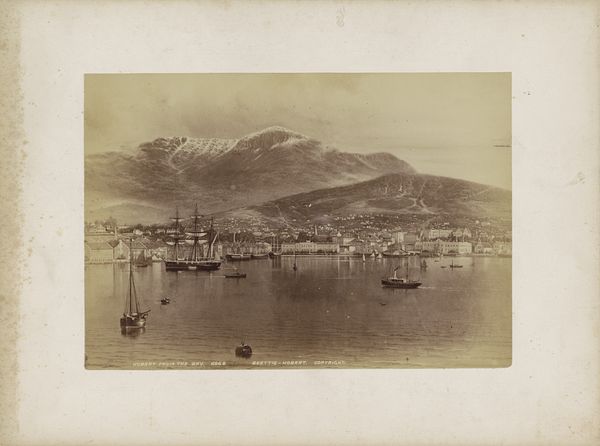
Copyright: Public Domain
Curator: Captain R.H. Henry's photograph, "Loch Long Head," taken in 1856, presents us with a view of the Scottish landscape, captured in gelatin-silver print. Editor: My first impression is the sheer tranquility; the monochromatic tones create a meditative, almost melancholic mood. It’s remarkably still. Curator: Note the materiality—the gelatin-silver process offered a certain tonal range and a crispness previously unseen in photography. And consider Captain Henry; a member of the British Army capturing these scenes. Was this an artistic pursuit or something else entirely? How did military interests intersect with landscape aesthetics during this time? Editor: The composition draws my eye to the figures in the boats – their posture speaks of labor and resilience in the face of nature. There is the symbolic weight of their catch in the boats. Fish as a symbol is deeply connected to christian history and the very real labor necessary to catch such cargo. Curator: It also provokes thinking about the accessibility and development of photography during this time. Think about the infrastructure and labor required for its proliferation. Editor: These lone figures, dwarfed by the mountains, feel timeless and the gelatin silver-print evokes the mists of time. What could this monochromatic lens tell us of this place’s collective history, where symbolism intertwines with tangible evidence? Curator: It serves to consider what landscape signifies, particularly from the standpoint of a military man, but also to contemplate how the burgeoning photographic industry represented notions of progress, labor, and man's relationship with nature. Editor: The image becomes a mirror reflecting our enduring fascination with landscape. Thank you. Curator: Indeed. Considering this landscape in its material and symbolic contexts allows a more comprehensive encounter.
Comments
No comments
Be the first to comment and join the conversation on the ultimate creative platform.

